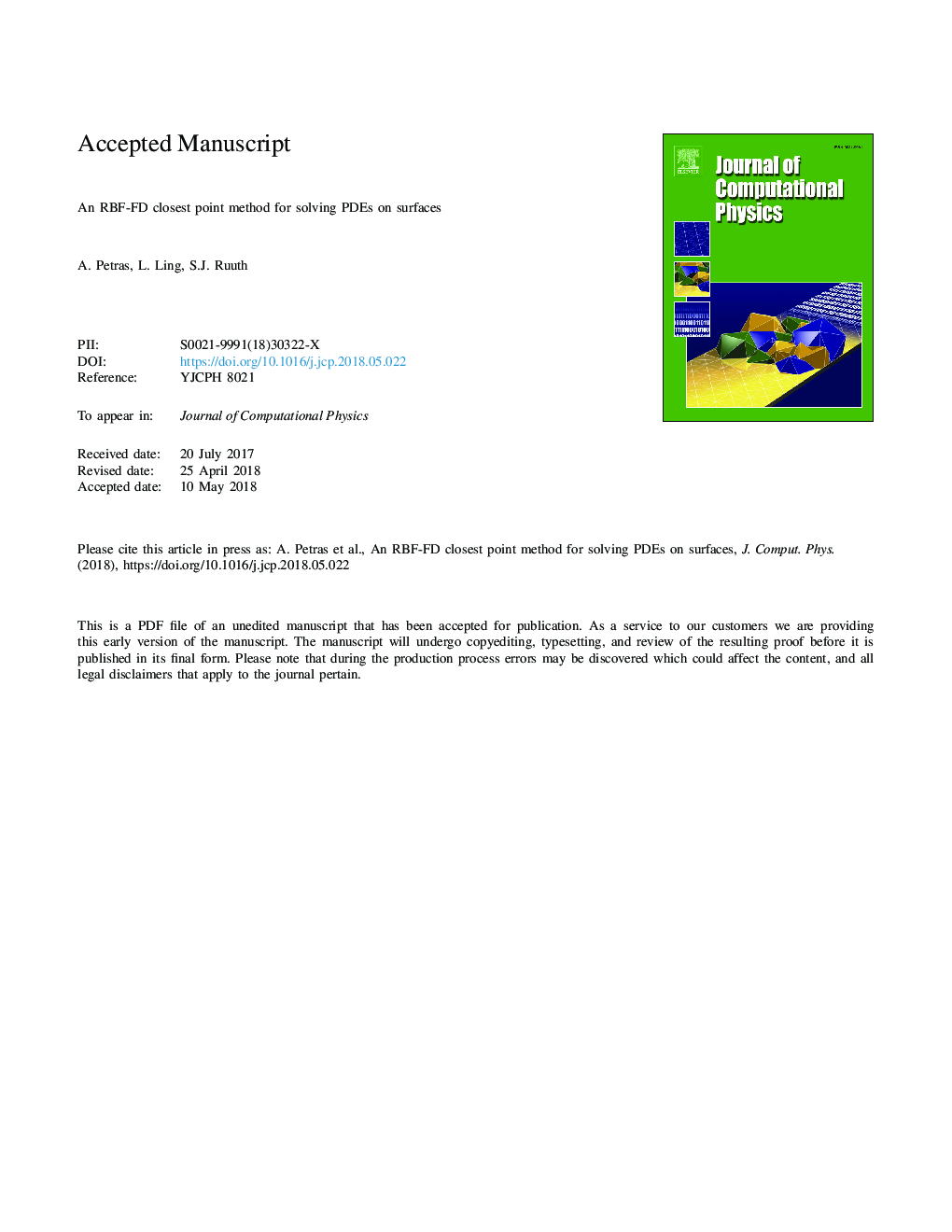| Article ID | Journal | Published Year | Pages | File Type |
|---|---|---|---|---|
| 6928717 | Journal of Computational Physics | 2018 | 32 Pages |
Abstract
Partial differential equations (PDEs) on surfaces appear in many applications throughout the natural and applied sciences. The classical closest point method (Ruuth and Merriman (2008) [17]) is an embedding method for solving PDEs on surfaces using standard finite difference schemes. In this paper, we formulate an explicit closest point method using finite difference schemes derived from radial basis functions (RBF-FD). Unlike the orthogonal gradients method (Piret (2012) [22]), our proposed method uses RBF centers on regular grid nodes. This formulation not only reduces the computational cost but also avoids the ill-conditioning from point clustering on the surface and is more natural to couple with a grid based manifold evolution algorithm (Leung and Zhao (2009) [26]). When compared to the standard finite difference discretization of the closest point method, the proposed method requires a smaller computational domain surrounding the surface, resulting in a decrease in the number of sampling points on the surface. In addition, higher-order schemes can easily be constructed by increasing the number of points in the RBF-FD stencil. Applications to a variety of examples are provided to illustrate the numerical convergence of the method.
Related Topics
Physical Sciences and Engineering
Computer Science
Computer Science Applications
Authors
A. Petras, L. Ling, S.J. Ruuth,
